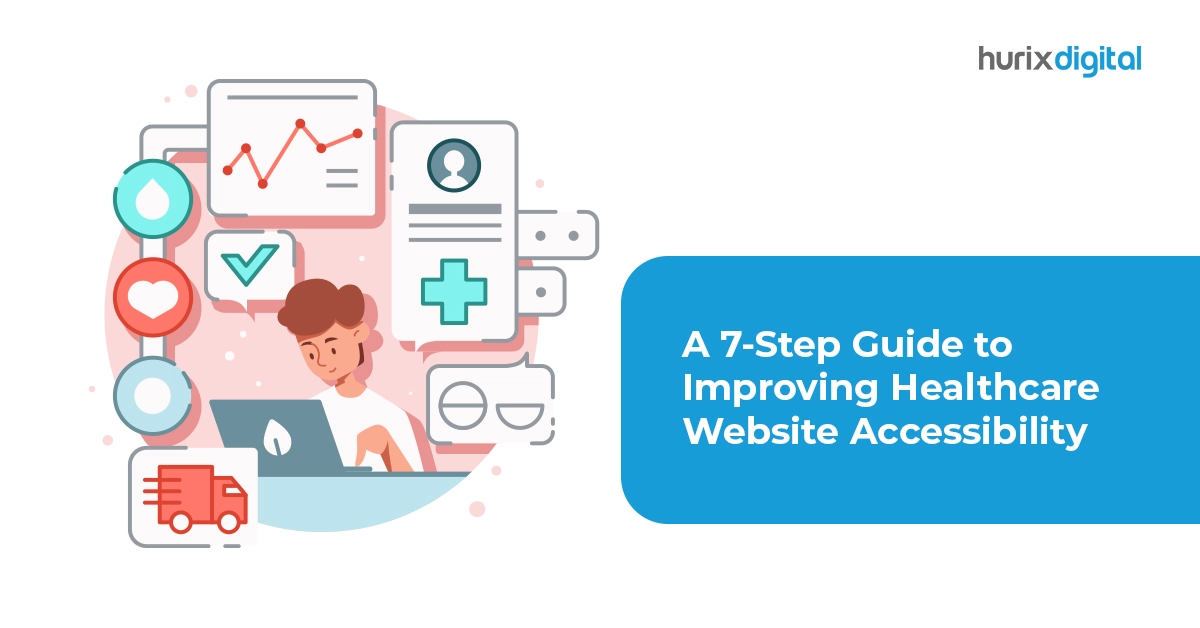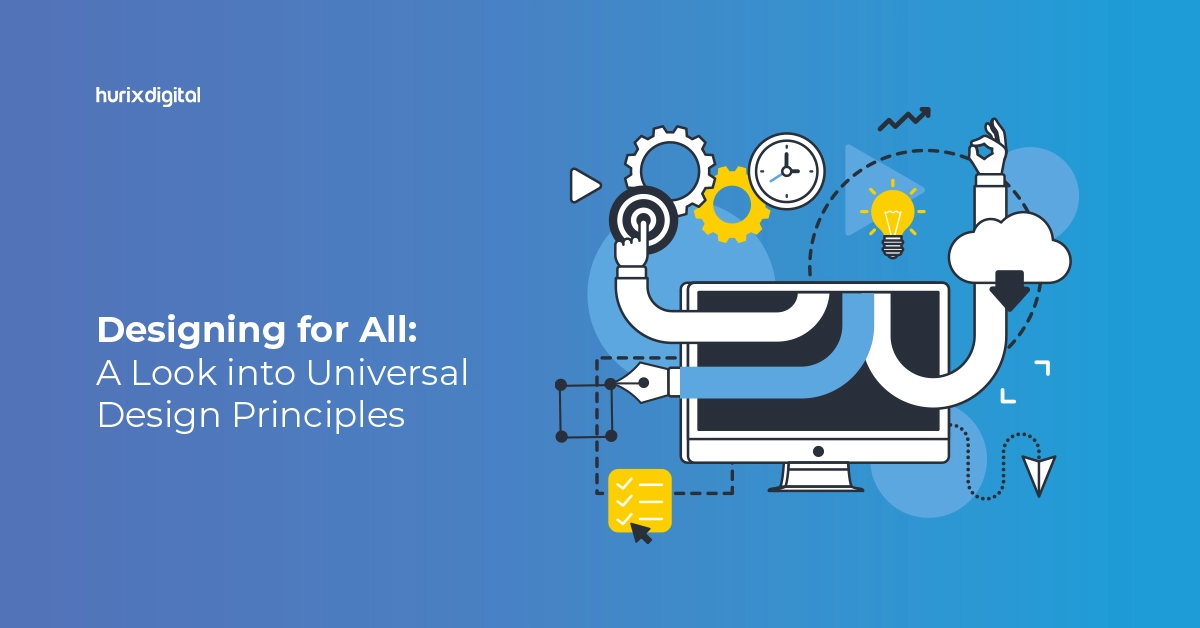
A 7-Step Guide to Improving Healthcare Website Accessibility
Summary
Explore a comprehensive guide to enhancing healthcare website accessibility. This blog outlines seven essential steps for making websites more accessible to all users.
Technology plays a huge role in our lives today. As of 2023, approximately 67% of the global population, around 5.4 billion people, uses the internet. However, there are also 1.3 billion individuals globally (16% of the global population) living with disabilities who face daily challenges in accessing technology and the internet.
It is important for everyone to be able to easily navigate and have equal access to digital tools and healthcare systems. So, how can we improve healthcare website accessibility? Designing and building disability-friendly healthcare websites not only allows more people to use your site but also provides a better experience.
Having said that, we’ll discuss the top 7 steps to make healthcare websites accessible for users with disabilities.
So, let’s get started!
Table of Contents:
- Why is it Important to Maintain Healthcare Website Accessibility?
- Features that Improve Accessibility
- A 7-Step Guide to Ensure Healthcare Website Accessibility
- Wrapping Up
Why is it Important to Maintain Healthcare Website Accessibility?
Having an accessible health website is important because it ensures people with disabilities can access resources, tools, and services.
For example, some people may experience difficulty using a laptop keypad or simply reading because of dyslexia.
But accessibility isn’t just important for those who are disabled! Most of us have situational difficulties as well, including finding it difficult to use a smartphone in direct sunlight.
Legal Compliance
Healthcare websites need to meet certain legal standards for accessibility. These standards, known as healthcare website accessibility standards, ensure that people with disabilities can use the websites easily.
- Providers must ensure ADA compliance for healthcare websites, making it easy for everyone to use and navigate information.
- Website owners should also include an ADA accessibility statement that explains why changes have been made, and that includes brief directions on how to use the accommodations.
In today’s interconnected world, everything from accessing medical records and patient information to booking a doctor’s appointment is digital.
This is why it is crucial to make healthcare services accessible to avoid marginalizing individuals and creating a social divide.
Also Read: Healthcare Access for All: Navigating USA’s Digital Accessibility Standards
Features that Improve Accessibility
Here are some of the accessibility features for websites and applications:
- Navigation: Make sure the website is well-designed and that all links are easy to identify. Also, include a footer that serves as a navigation hub.
- Large fonts: Use up to 300% magnification while maintaining text visibility and image scaling.
- Color-blind mode: Include a color-blind mode.
- Speech recognition: Include speech recognition.
- Keyboard navigation: Provide keyboard navigation choices.
- Photo alt-text: Include image alt-text.
- Night and day display options: Include night and day display options.
- Simple writing styles: Use simple and easily understandable writing styles.
- Pause or play content: Users should be able to pause or play the content with a keyboard.
- Avoid auto-play: Don’t use auto-play or place text over moving video content.
A 7-Step Guide to Ensure Healthcare Website Accessibility
An inaccessible website can damage patient trust and impair the ability to help them. Enhancing healthcare website accessibility through these 7 steps can improve overall user experience.
Let’s take an in-depth look at them:
1. Integrating Assistive Technology
Incorporating assistive technology into your website can assist people who struggle with typing, mouse navigation, screen reading, or using touchscreens. This technology enables them to navigate your website easily, research your services, and schedule appointments.
Without this technology, ensuring a consistent experience for individuals with physical disabilities is challenging.
2. Accessible Formats for Content
Digital accessibility should guarantee an inclusive experience, encouraging healthcare organizations to provide their patients with content in a variety of accessible formats.
Examples include providing text alternatives for images, closed captions for videos, audio descriptions for text files, and remediating PDFs to ensure they are tagged and compliant with standards.
3. Ensuring Keyword-Friendly Navigation
A website should be accessible without a mouse, as many assistive technologies rely on keyboard-only navigation.
- It’s crucial to ensure that your site’s primary features can be accessed using only a keyboard.
- The Tab key is commonly used for keyboard navigation, allowing users to move between links, buttons, and forms.
4. Careful Selection of Colors
Select colors for your site that contrast well to ensure everyone can differentiate between various page elements.
- The most critical consideration is ensuring that the text stands out against the background. Aim for a dark color against a light one to prevent them from blending.
- Online tools like WebAIM and Contrast Checker can help you find and test color combinations.
5. Include Resizable Texts
Users can typically resize text on most devices and browsers, benefiting those with visual impairments.
- Ensure your website is responsive so text and other elements can adjust in size for different screen sizes.
- Use relative sizes instead of absolute units like pixels to allow text to scale based on content and screen size.
- You should also go through all of your font sizes at a higher zoom level on your browser.
6. Incorporate Gamification
Gamification involves integrating game-like features such as points, rewards, and competition into healthcare apps and websites.
This approach can significantly enhance the accessibility of healthcare websites by engaging users and motivating patients to engage more actively in preventive health practices.
- By incorporating elements such as progress tracking, rewards, and interactive challenges, gamification encourages users to explore various features and resources within the website.
- Individuals with diverse needs and abilities can navigate the site more effectively, as it provides clear indicators of their progress and incentivizes continued engagement.
- Gamification techniques can simplify complex medical information, making it more digestible and understandable for users with varying levels of health literacy.
Providing content in different formats can improve health outcomes for all individuals and enable differently-abled patients to manage chronic illnesses more effectively.
7. Designing Accessible Forms for Healthcare Websites
Accessible forms are needed for health websites as this ensures that individuals with disabilities can access and use the services provided.
Accessible forms allow people with visual, hearing, physical, or intellectual disabilities to efficiently interact with the website, book appointments, access health information, and communicate with health care providers.
Additionally, form accessibility improves the experience of all individuals, increasing the overall reputation and effectiveness of a health website.
Also Read: The Beginner’s Guide to Accessibility Remediation – What You Need to Know!
Wrapping Up
By following web accessibility guidelines for healthcare, educating people, and encouraging innovation, healthcare providers can ensure that no individual is left behind, irrespective of their condition.
Hurix Digital is ready to support you along the way if your company wants assistance embracing inclusion and complying with accessibility regulations. Healthcare providers can collaborate with the experts at Hurix Digital to perform accessibility assessments and develop inclusive training programs and eLearning platforms.
Contact us to learn more about our digital accessibility solutions and implement them in your digital platforms.

Vice President – Digital Content Transformation. He is PMP, CSM, and CPACC certified and has 20+ years of experience in Project Management, Delivery Management, and managing the Offshore Development Centre (ODC).







